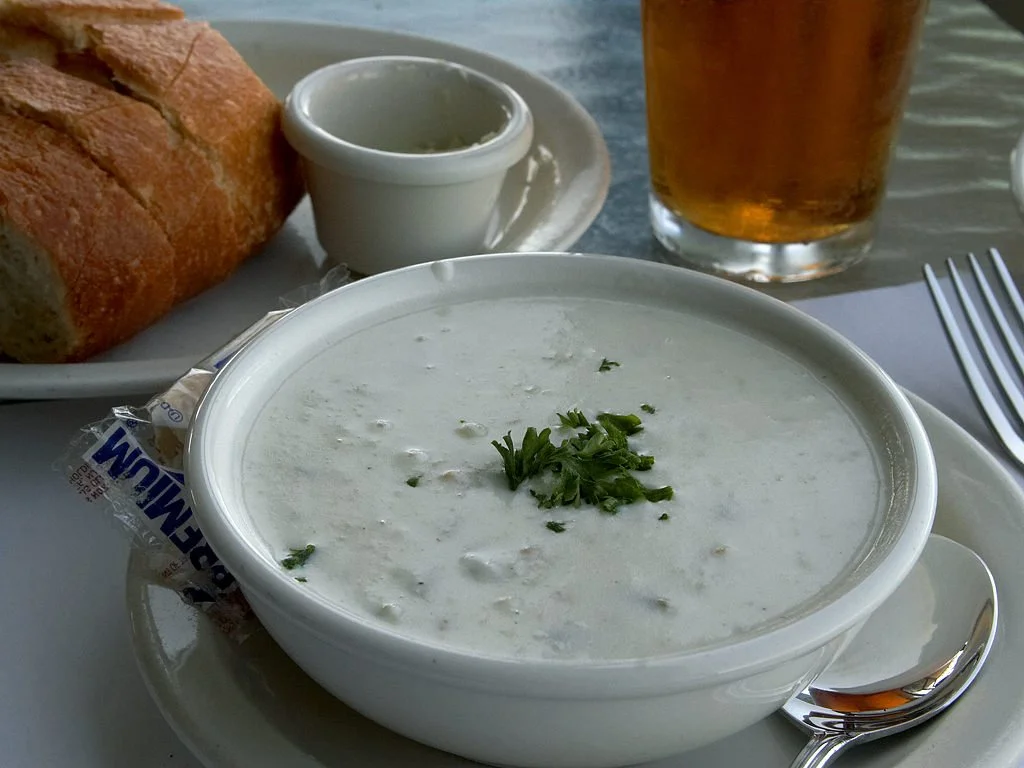
Modernist chowder
‘‘Today we take New England clam chowder as something traditional that makes our roots as American cooking very solid, with a lot of foundation. But the first person who decided to mix potatoes and clams and bacon and cream, in his own way 100 to 200 years ago, was a modernist.’’
— Jose Andres (born 1969), Spanish-born American celebrity chef, restaurateur and founder of World Central Kitchen (WCK), a non-profit devoted to providing meals in the wake of natural disasters
Eating tranquilizers from childhood
New England (i.e., real) clam chowder
“You can’t escape the taste of the food you had as a child. In times of stress, what do you dream about? Your mother’s clam chowder. It’s security, comfort. It brings you home.
— Jacques Pepin, French-born celebrity chef and TV host. He lives in the charming town of Madison, Conn., on Long Island Sound.
Sunset at a beach in Madison
— Photo by Mike12345678901
In Madison: CCC Memorial plaque for Camp Hadley ruins, at entrance off Copse and Warpas Roads. The CCC created many parks and did much reforestation during the New Deal.
—Photo by Morrowlong
Heart-stopping pleasure
"New England clam chowder, made as it should be, is a dish to preach about, to chant praises and sing hymns and burn incense before. [...] It is as American as the Stars and Stripes, as patriotic as the National Anthem. It is Yankee Doodle in a kettle.''
-- Joseph C. Lincoln (1870-1944), an American fiction writer much of whose work is set on Cape Cod.
New England clam chowder, sometimes called Boston Clam Chowder in the Midwest, is a milk- or cream-based chowder, usually thicker than other regional styles of clam chowder. It is usually made with potatoes, onion and clams.
New England clam chowder is often accompanied by oyster crackers, a real salt fest.
From the Wikipedia page on Mr. Lincoln:
"Lincoln was born in Brewster, Mass., on Cape Cod, and his mother moved the family to Chelsea, Mass., a manufacturing city outside Boston, after the death of his father. Lincoln's literary career celebrating 'old Cape Cod' can partly be seen as an attempt to return to an Eden from which he had been driven by family tragedy. His literary portrayal of Cape Cod can also be understood as a pre-modern haven occupied by individuals of old Yankee stock which was offered to readers as an antidote to an America that was undergoing rapid modernization, urbanization, immigration and industrialization.''




